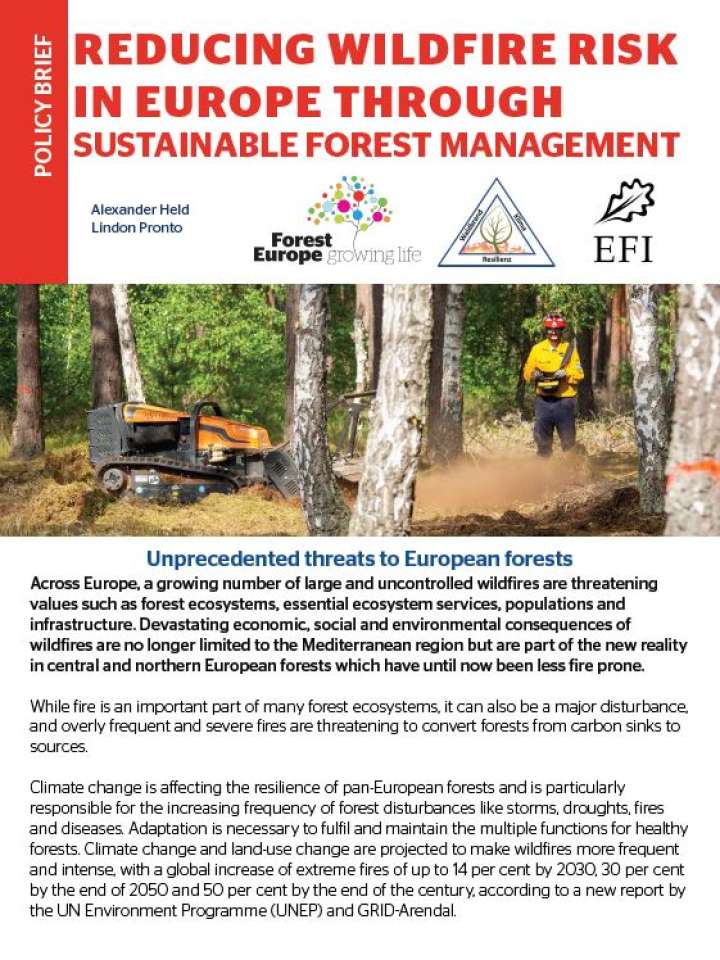Reducing wildfire risk in Europe through sustainable forest management: a policy brief
This policy brief explores the ways sustainable forest management (SFM) can reduce wildfire risk in Europe. Across Europe, a growing number of large and uncontrolled wildfires are threatening values such as forest ecosystems, essential ecosystem services, populations and infrastructure. Devastating economic, social and environmental consequences of wildfires are no longer limited to the Mediterranean region but are part of the new reality in central and northern European forests which have until now been less fire-prone.
Some policy recommendations include:
- Reduce the number of skidding lanes where appropriate; adapt or develop roads for emergency access in higher-risk areas;
- Integrate pre-defined fire control lines and buffer zones (reduction of vegetation density, structure and type) and other protective measures, especially near communities, critical infrastructure, or other values;
- Use prescribed burning to achieve ecological balance or for vegetation management where appropriate and as a training, confidence building and educational tool for first responders, forest and land managers and other relevant stakeholders (e.g., nature conservation);
- Enable collaboration, communication, and capacity building in climate smart SFM across sectors and promote inclusive risk governance which supports diversity and dialogue.
- Acknowledge that even the best managed forest might burn under extreme weather conditions, but note that SFM is offering a wide range of mitigation measures pre- during- and postfire.
Explore further
